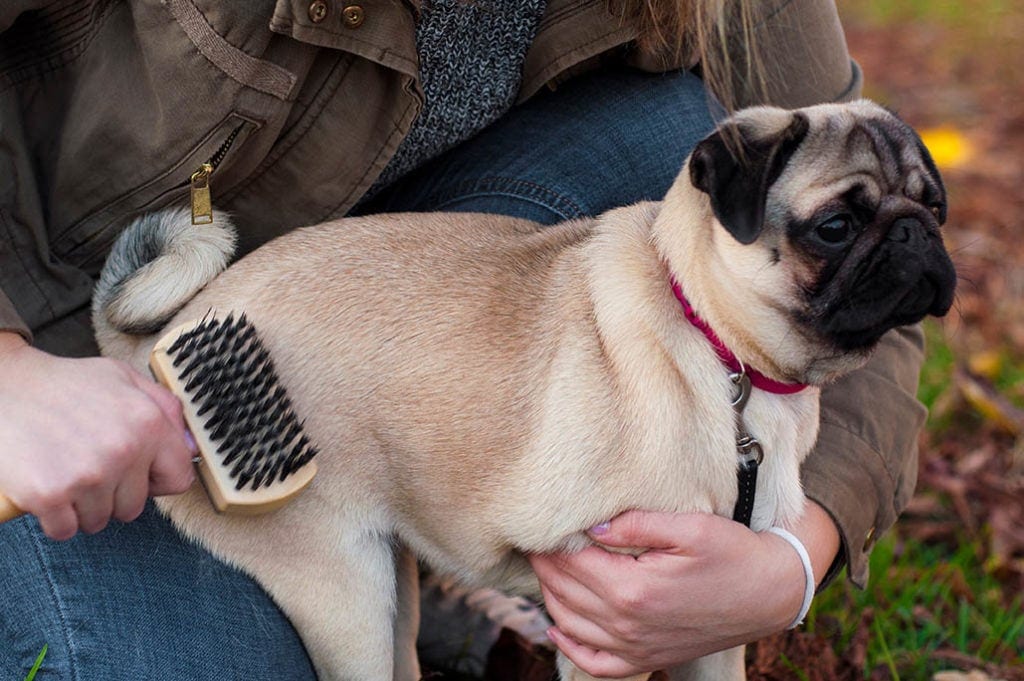How to Protect Dog Paws From Hot Pavement: 10 Vet Approved Tips

Updated on
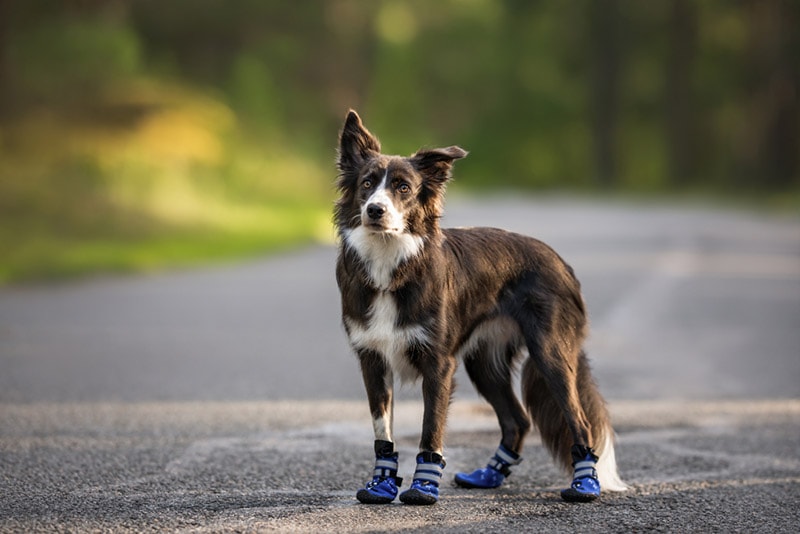
Dog paw pads are just as sensitive as the bottom of a human’s feet, and they can get burns when coming into contact with a hot surface. Therefore, in many parts of the US, walking your dog on the pavement or tarmac during summer can lead to paw burns.
If you are unsure whether you can safely walk your dog on the pavement, you can do the seven-second test: place the back of your hand on the surface of the ground for seven seconds. If you struggle to hold it down, it’s too hot to walk your dog. Luckily, there are several ways you can keep your dog’s paws from getting burnt during summer. Here are 10 tips for preventing your dog’s paws from getting burned.
The 10 Tips How to Protect Dog Paws From Hot Pavement
1. Stay on the Grass
If you insist on taking out your dog for a walk during summer, try and stay on the grass. Most dog parks have more grass than asphalt and are excellent places to let your dog run around. To avoid walking on pavements, consider driving your car to the park and back home. It may sound obvious, but make sure your dog doesn’t step on artificial grass, as this type of material is one of the most heat-trapping and becomes one of the hottest surfaces when compared to asphalt, concrete, track, or normal grass.1
2. Moisturize Their Paws
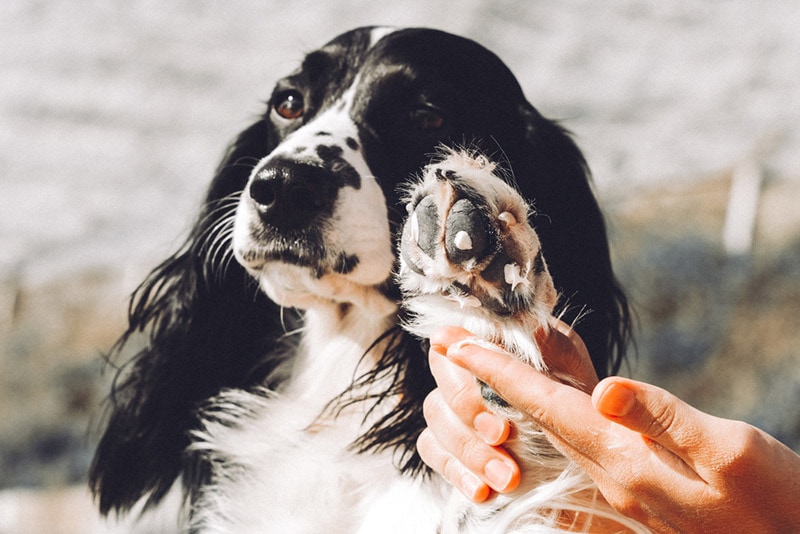
Minor injuries like cuts, cracks, and peeling can make your dog’s paw more vulnerable to burns. Moisturizing their feet often helps prevent these injuries and also soothes any mild burns. Coconut oil, for example, helps protect your dog’s paw pads from getting sore and also acts as a protective balm.
3. Invest in a Pair of Dog Shoes
Dog shoes are the most effective way to protect your dog’s paws from the hot pavement. However, some dogs don’t like wearing shoes, and you might have to go through several pairs until you can find a brand they like. Your dog will also have an adjustment period before they can get used to shoes. Ensure you buy shoes with rubber soles for optimum heat protection.
4. Walk Them When It’s Cool
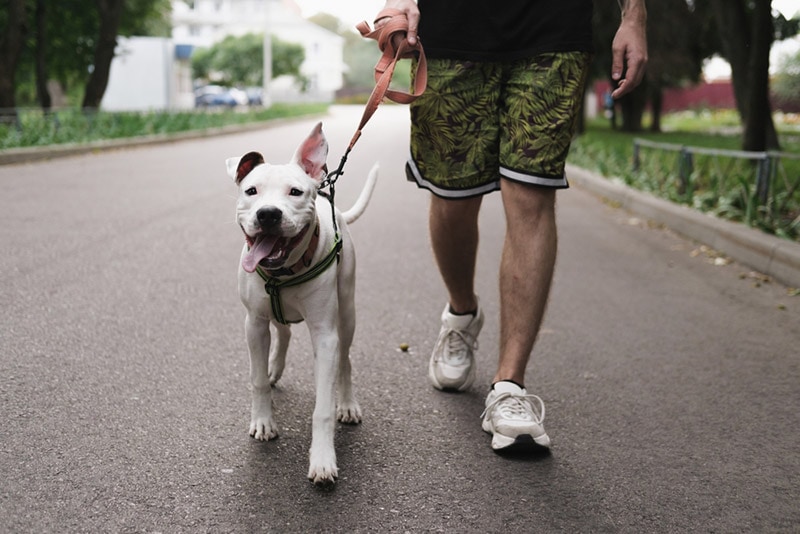
The most obvious tip is to only walk your dog when the pavements are cool. Even during summer, there are times when it’s cool enough to walk your dog on the pavement, such as early morning and late in the evening. Avoid walking your dog in the afternoon when the sun is hot and early in the evening since the pavements are still hot.
5. Use Paw Wax
Paw wax is a balm or moisturizer for dogs that soothes and hydrates the paw pads by sealing in moisture. You can find quality paw wax at your local pet store. Applying paw wax on your dog’s pads protects their feet from severe burns during summer.
6. Toughen Your Dog’s Paws
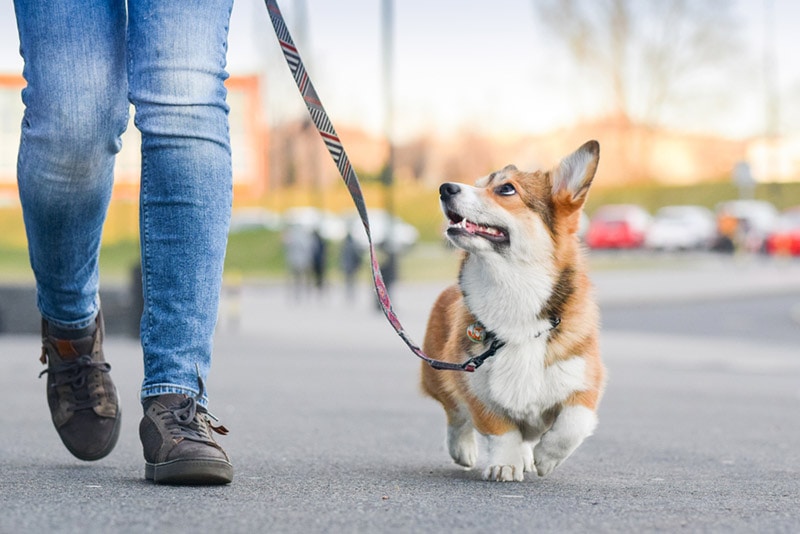
The softer your dog’s paws are, the easier it is for them to suffer from paw burns. One of the ways you can toughen their paws is by letting them walk on the pavement and tarmac when it is cool outside. It will toughen their paws without harming them and will help prevent potential burns and injuries.
7. Use a Stroller
If you must go outside with your dog when the temperatures are high, consider investing in a quality dog stroller. This will enable you to go out with your dog without their paws getting burned until you find a cool place for them to walk. If you have a small dog, you can carry them in a “dog backpack” with their head out in the open. You can also carry them in your arms if necessary.
8. Use Socks

Although dog socks are mainly intended for indoor wear, you can put them on your dog’s feet as a last resort. Your dog is also more likely to be comfortable with dog socks than with shoes since they are less restrictive. Ensure the dog socks have rubber soles to prevent their paws from burning.
9. Check Your Dog’s Feet Frequently
Your dog can develop small cuts that make its feet more susceptible to burns. Checking their feet frequently enables you to treat these injuries and prevent existing burns from worsening. If you notice your dog acting strangely, such as trying to avoid a certain paw from touching the ground, take them to the vet to see what the problem is.
10. Get Alternative Forms of Exercise
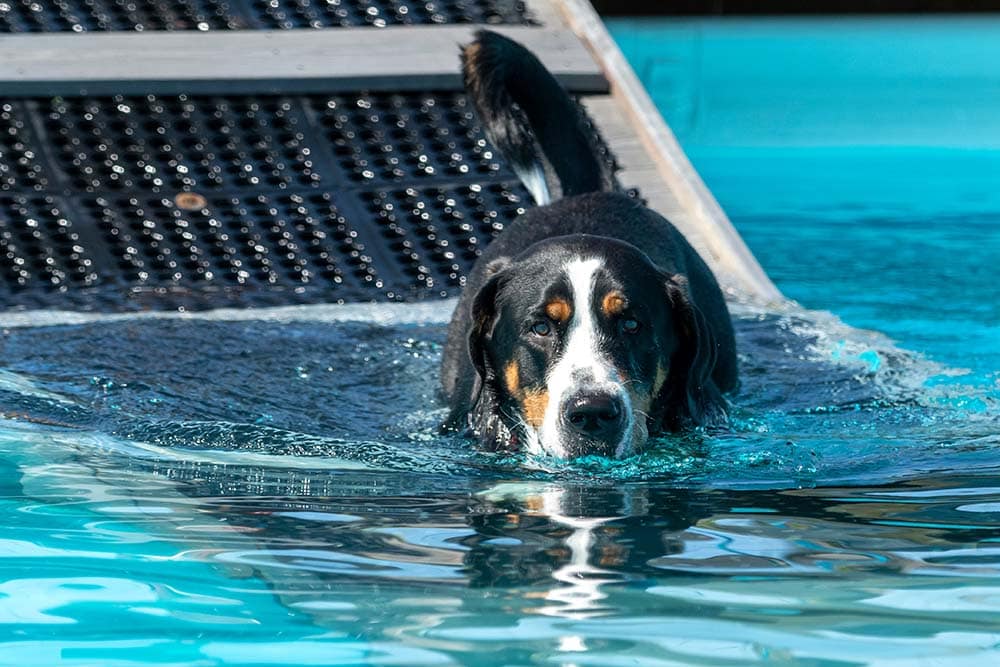
Instead of taking your dog out for a walk on hot summer days, finding an alternative form of exercise to keep your dog active is better. You can play a game of fetch in the yard, swim, or try indoor games such as tug of war and hide and seek. Substituting walks with indoor games can prevent your dogs from developing paw pad burns while still giving them the exercise they need.
How to Tell If Your Dog’s Paws Are Burnt
Despite taking precautions, your dog may still get paw pad burns, Some of the signs that can tell you when your dog’s paws have burns include:
- Visible blisters on the paw pads
- Extreme redness
- Limping
- Excessive licking of feet
- Peeling skin
- Discolored pads
- Refusing to walk
- Whining when walking
- Holding a paw up
Conclusion
Any of the tips above can help you protect your dog’s paws from hot pavement. However, burns can still happen. If you notice any of the above symptoms with your dog, contact a vet immediately and set up an appointment. They will diagnose the degree of the burns and decide on the best course of action. If you choose to treat the paws at home, you will still need to understand the severity of the burns.
If your dog’s paws seem sore but you can’t see an obvious burn, you can soak the paws in cold water, dry them well, disinfect them with an antiseptic wash or spray, and bandage them for a few hours to prevent further damage. If they still look sore after a few hours, it is better to see your vet for assessment. Severe burns, on the other hand, will need a vet immediately to prevent other infections and relieve pain.
Featured Image Credit: otsphoto, Shutterstock




